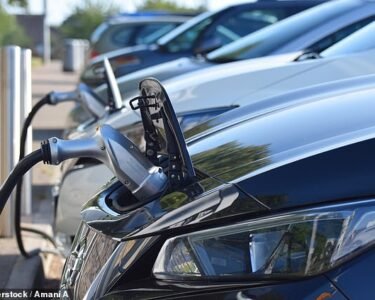The Supreme Court on Wednesday said it is not the controlling authority for elections and cannot dictate the functioning of the Election Commission of India, a constitutional authority. The top court’s comments came while it was hearing petitions seeking directions on 100 percent cross-checking of Electronic Voting Machine (EVM) data against Voter-Verifiable Paper Audit Trail (VVPAT) records. The court has reserved its judgment as of now.
The Supreme Court’s remarks came hours after it issued a host of queries to the Election Commission of India (ECI) on the functioning of EVMs and VVPAT. Deputy Election Commissioner Nilesh Kumar Vyas appeared before the top court on Wednesday to issue clarifications on the apex court’s questions.
Answering the apex court’s query regarding micro-controllers, the Deputy Election Commissioner said, “The micro-controllers are one-time programmable. Each of the three units – CU (controlling unit), BU (balloting unit) and VVPAT – have their own micro-controllers, which cannot be accessed physically. The one-time prgramme is burnt into them.”
Further while responding to concerns raised by Advocate Prashant Bhushan, appearing for petitioner — Association for Democratic Reforms, the court said, “If you are prejudiced about a thought-process, then we cannot help you… we are not here to change your thought process.”
Earlier in the day, the top court while hearing a batch of petitions seeking directions to tally VVPAT slips with votes cast through EVMs during the elections raised several “technical questions” and asked an Election Commission officer to be present in the court to solve the queries.
The matter was being heard by a bench comprising of Justices Sanjiv Khanna and Dipnkar Datta after the top court reserved an order on April 18.
SC Raises Questions
- Asking for clarifications, Justice Khanna while hearing the matter said, “We just wanted 3-4 clarifications. Is the micro-controller installed in the controlling unit or in the VVPAT? There seems to be an indication, that we were under the impression that the micro-controller is in the Control Unit. We were told that VVPAT has a flash memory.”
- “The second thing we want to know is if the microcontroller installed is one-time programmable. Confirm that,” Justice Khanna added, saying, “Third thing is, there was a reference to Symbol Loading Units, how many of them are available?”
- “It was said that the limitation for an election petition is 30 days and hence the data was stored for 45 days. However, as per the RP Act, the limitation period is 45 days. So the period for storage may have to be correspondingly increased?” questioned Justice Khanna.
- Another thing that the apex court demanded clarification was on whether only the Control Unit is sealed or the VVPAT is kept separately.
SC on Petitions Seeking 100% EVM-VVPAT Verification
Underscoring the importance of voter satisfaction and trust in the electoral system, the top court had during the hearing told petitioners, who sought its direction to go back to using ballot papers not to suspect the efficacy of Electronic Voting Machines (EVM) and appreciate if the Election Commission does good work.
NGO ‘Association for Democratic Reforms’ (ADR), one of the petitioners, sought reversal of the poll panel’s 2017 decision to replace the transparent glass on VVPAT machines with an opaque glass through which a voter can see the slip only when the light is on for seven seconds.
During the hearing, which spanned for nearly two days, the bench had interacted for nearly an hour with senior Deputy Election Commissioner Nitesh Kumar Vyas to understand the functioning of EVMs and told advocate Prashant Bhushan, appearing for the NGO that voter satisfaction and trust are at the core of the electoral process.
Senior advocate Maninder Singh, appearing for the Election Commission, had submitted that EVMs are standalone machines and cannot be tampered with but possibility of human error cannot be ruled out.
On April 16, the top court had deprecated criticism of EVMs and calls for reverting to ballot papers, saying the electoral process in India is a “humongous task” and attempts should not be made to “bring down the system”.
The seven-phase Lok Sabha polls began on April 19 and the second phase is slated to be held on April 26.
The ADR has sought matching the count in EVMs with votes that have been verifiably “recorded as cast” and to ensure the voter is able to verify through VVPAT slip that his vote, as recorded on the paper slip, has been “counted as recorded”.
What is VVPAT & How Does It Work?
The VVPAT — Voter Verified Paper Audit Trail — is a method of providing feedback to voters using a ballotless voting system. A VVPAT is intended as an independent verification system for voting machines designed to allow voters to verify that their vote was cast correctly, to detect possible election fraud or malfunction, and to provide a means to audit the stored electronic results.
The machine contains the name of the candidate (for whom vote has been cast) and symbol of the party/individual candidate.
The VVPATs are a second line of verification and are particularly useful at the time when allegations around Electronic Voting Machines’ tampering arise. The machines can be accessed by the polling officials and not by the voters.
(With inputs from PTI)
Stay Ahead With all the Lok Sabha Election 2024 Related Real-Time Updates At News18 Website.
first published: April 24, 2024, 07:42 IST




